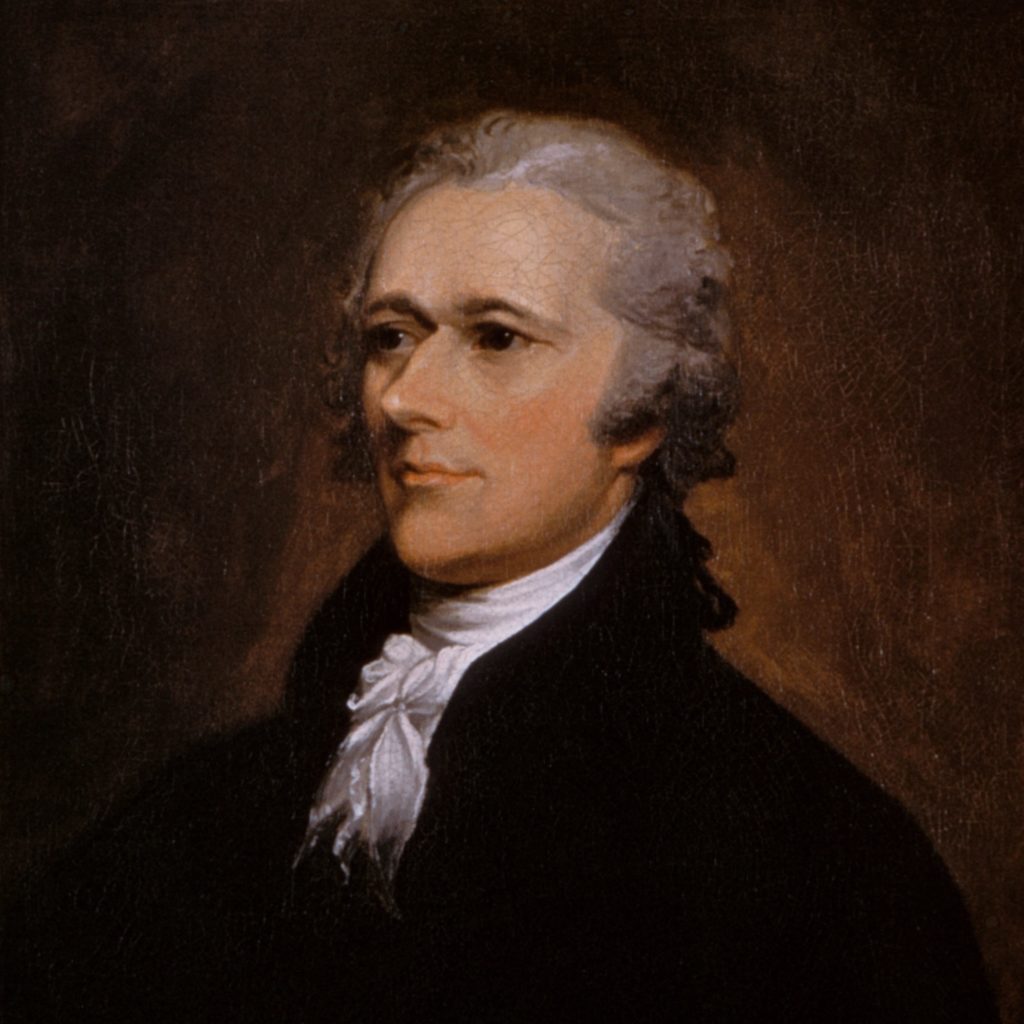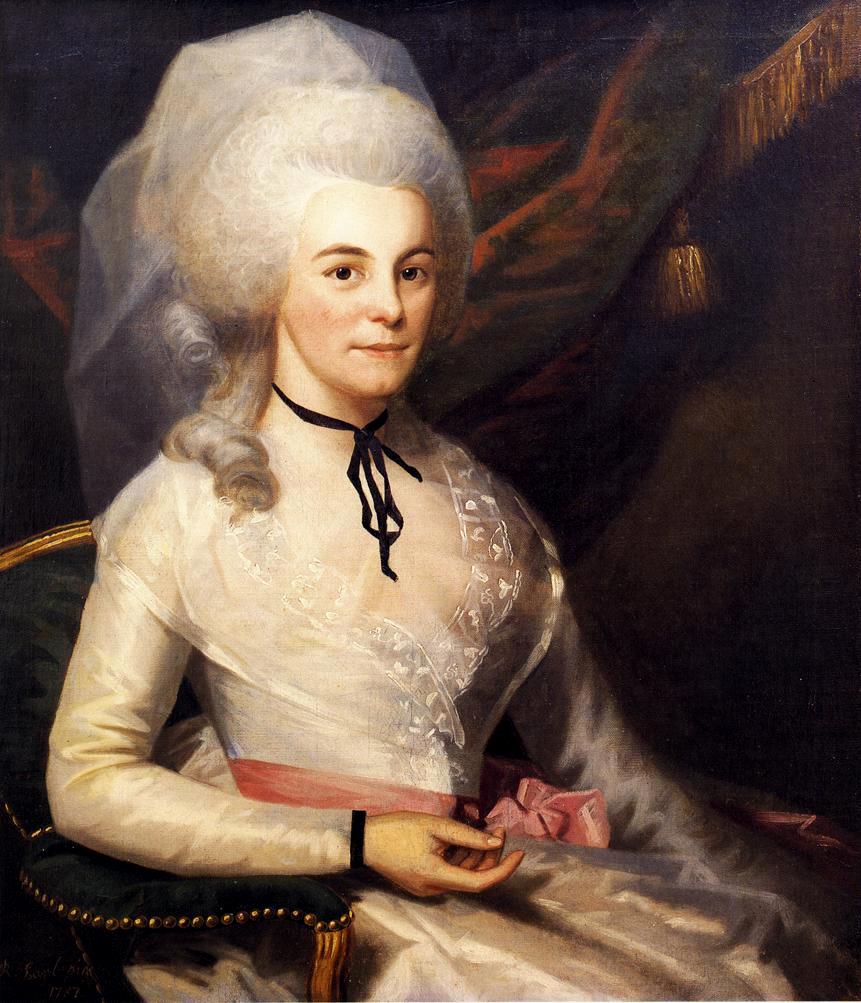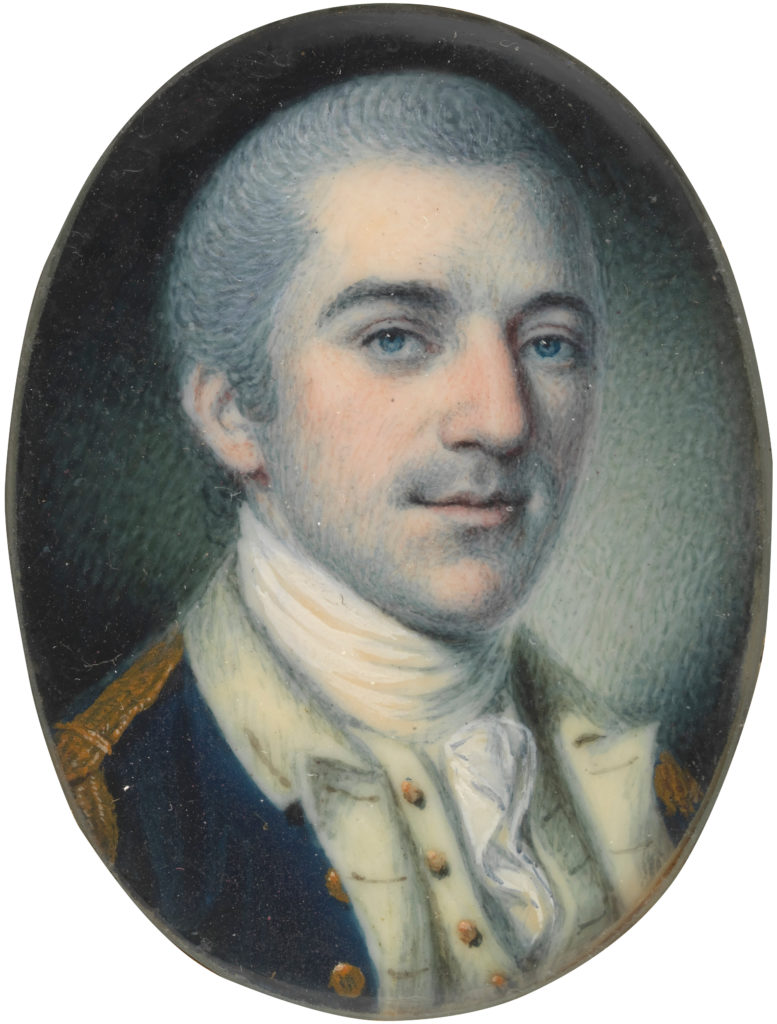The Sexuality of Alexander Hamilton
Listen to the podcast adaptation of this article here, or read the original version below.

Even during his lifetime, Alexander Hamilton was known for his love of women. He was said to be incredibly charming, always made himself the center of attention when beautiful women were around, and even managed to find himself in the center of America’s first political sex scandal. The emphasis on Hamilton’s interactions with women, however, has often led to the mistaken assumption that Hamilton was heterosexual; in fact, Hamilton had romantic and sexual relationships with men that played just as important of a role in his life as his relationships with women. Alexander Hamilton was bisexual.
The Women
Elizabeth Schuyler

While an argument can be made for Alexander Hamilton being homosexual, it is more likely he was bisexual, as there is significant evidence that he was attracted to women. When faced with the question of Hamilton’s sexual orientation, the first thing most people wonder about is his relationship with his wife, Elizabeth Schuyler. There is room for suggesting Hamilton may have married Schuyler for non-romantic reasons; marrying her gave Hamilton access to money and connections he was sorely in need of. Additionally, Hamilton would not be the only gay man ever to marry a woman, either to conceal his true orientation or simply because he wanted a stable home life. That being said, there is evidence of genuine love and attraction in their relationship. Hamilton’s letters to Schuyler while they were courting seem far too emotional to be faked, such as when he told her “I meet you in every dream and when I wake I cannot close my eyes again for ruminating on your sweetness.”¹ Hamilton even wrote her poetry, including a poem about why she made him so happy entitled “Inquiry to Why I Sighed”. Schuyler attached the folded up poem to a chain and wore it around her neck for the rest of her life.² The couple also had eight children together, (an average of one birth every three years they were married) which may be more than one would expect if it were a passionless marriage.
Maria Reynolds
His love for his wife aside, Hamilton is infamous for having an extramarital affair. This relationship may provide the best evidence that Hamilton was indeed attracted to women. For one thing, he had nothing to gain from this relationship as he did from his relationship with Schuyler. In fact, Hamilton risked losing the money, connections, and family he had gained from his marriage. It is also unlikely that Hamilton had the affair to prove to anyone that he was not gay, as he paid Maria Reynolds’s husband a significant amount of money not to reveal it.
When the affair was finally exposed, Hamilton wrote what is now referred to as “The Reynolds Pamphlet”. Though Hamilton’s chief motivation in writing the pamphlet was to prove that the affair was about sex and not, as had been alleged, a cover for embezzling from the treasury with Mr. Reynolds, Hamilton also took the opportunity to attempt to justify his infidelity. One of the ways Hamilton tries to do this is by showing why Maria Reynolds was so hard to resist, at one point explaining “the variety of shapes her body could assume were endless.”³
The Men
Robert Troup
Hamilton’s evident attraction to women does not prove that he was heterosexual as it is just as apparent that he was attracted to men. While at King’s College Hamilton was roommates with a man named Robert Troup, and the two made an instant connection, having similar backgrounds and interests. Hamilton was roommates with Troup while he was a freshman and Troup a senior, and they continued to live together for another year after Troup had graduated. During their time together at King’s, Troup noted in his biography of Hamilton, they “occupied the same room and slept in the same bed.” Before Troup had to move on to pursue his career Hamilton gave Troup “a thick sheaf of poems, which the latter proceeded to lose during the Revolution.”⁴ It is entirely possible that Troup genuinely did “lose” these poems while fighting a war. That being said, Troup was very sensitive about Hamilton’s legacy: he was greatly distressed by the damage done to Hamilton’s reputation by the Reynolds Pamphlet, and his biography of Hamilton does what it can to portray Hamilton as a hero. It is entirely possible that Troup destroyed these poems rather than risk anyone knowing what Hamilton wrote for him. Hamilton and Troup remained close even after leaving King’s College. They both lived at Schuyler Mansion for a time, and Troup later became a devout member of the political party Hamilton created, the Federalists. Hamilton even made Troup the executor of his will in 1795, in anticipation of a duel.⁵ Nine years after that, on the day before the duel that would take Hamilton’s life, Hamilton chose to spend an hour of what he knew might be his last day alone in a room with Troup.⁶ The idea that Hamilton and Troup may have been in a romantic and/or sexual relationship at some point during their acquaintance is further reinforced by the fact that there is also evidence to support Troup being attracted to men: letters suggest that Troup had a romantic relationship with Aaron Burr.⁷
John Laurens

After parting ways with Troup, Hamilton had one of the most significant romances of his entire life with John Laurens, a fellow aide de camp to George Washington. Though it was expected that young gentlemen in the late 18th century would write heartfelt and emotional letters to one another, Hamilton’s letters to John Laurens go beyond that. It was not unusual for a man to end a letter to a friend by reminding him that he loved him, and fellow soldiers did this even more often than most. When Hamilton wrote to Laurens however, he did more than simply say he loved him. In one of his first letters to Laurens Hamilton told him that since Laurens had left headquarters Hamilton had discovered just how much he loved him. Hamilton goes on to chide Laurens for stealing his heart, telling him that “You should not have taken advantage of my sensibilities to steal into my affections without my consent”.⁸Though he goes on to discuss military business, Hamilton circles back around to the subject of romance. He begins to discuss marriage, jokingly telling Laurens to put an ad in the paper to find him a wife. Hamilton goes so far as to tell Laurens what to say in the ad, describing his ideal mate. Hamilton tells Laurens at the end of the letter that he does not really want a wife, and according to 18th century LGBT history expert Rictor Norton Hamilton actually includes the instructions for the ad “as a substitute or displacement for his own love of Laurens, as an opportunity to explore his own feelings and to gauge the other man’s response.”⁹
By describing his ideal spouse Hamilton suggests that Laurens fits his requirements; by mentioning he is looking for a wife he gives Laurens a chance to endorse the idea or to beg Hamilton to reserve his love for Laurens. Hamilton also includes the description of himself Laurens should advertise. This description ends with the words “mind you do justice to the length of my nose and don’t forget that I” the last five words of the sentence were obliterated, probably by his son John Church Hamilton when he was organizing his father’s papers for publication. The only indication of what those words might have been is the fact that “the length of my nose” was slang at the time for the size of a man’s penis.
Hamilton’s letters to Laurens continue this romantic tone even after Hamilton becomes engaged to Elizabeth Schuyler. Hamilton tells Laurens “in spite of Schuyler’s fine black eyes, I have a part of myself for the public and another part for you.”¹⁰ This letter implies Hamilton is only marrying Schuyler for appearances sake, and that though Hamilton’s public appearance will be improved by marrying her, his heart still belongs to Laurens. Apparently Hamilton’s son John C. Hamilton understood that there was more going on in these letters than society accepted at the time; at the top of the letter where Hamilton confesses his love John wrote “I must not publish the whole of this,”¹¹ and indeed, the letter was originally published without the last few paragraphs where Hamilton joked about a newspaper ad for a wife. (Interestingly, John C. Hamilton named one of his sons Laurens.) Hamilton’s actions mirrored the sentiments expressed in his letters: Hamilton and Laurens were later said by other soldiers to have rarely been apart when both were at camp, they shared a cabin at Valley Forge, and when Laurens went back to South Carolina to defend his home state, Hamilton begged Washington to let him go with Laurens. When Laurens was unexpectedly killed in a skirmish with British forces, he was devastated, and the usually talkative Hamilton barely penned a word on the subject.
That Hamilton was attracted to women is pretty much certain. The genuine love in his marriage and genuine lust in his extramarital affair prove women had a very real influence on his life. But Hamilton’s love of women is only half of the story, and his love of men played just as important of a role in the life of this bisexual founding father.
If you appriciated this article, please consider becoming my Patron! 18th Century Pride is creating LGBT+ History Content | Patreon
Sources
- Alexander Hamilton to Elizabeth Schuyler, October 5, 1780
- Alexander Hamilton, Ron Chernow, 725
- Observations on Certain Documents Contained in No. V & No VI of “The History of the United States for the Year 1796” in which Charges of Speculation Against Alexander Hamilton, Late Secretary of the Treasury, Are Fully Refuted (The Reynolds Pamphlet), Alexander Hamilton
- Alexander Hamilton, Ron Chernow, 53
- http://exhibitions.nysm.nysed.gov/albany/bios/t/troup.html “Robert Troup”, Stefan Bielinski
- Alexander Hamilton, Ron Chernow, 697
- https://www.c-span.org/video/?437361-1/researching-alexander-hamilton “Researching Alexander Hamilton”, Joanne Freeman
- Alexander Hamilton to John Laurens, April 1779
- http://rictornorton.co.uk/hamilton.htm “Revolutionary Love”, Rictor Norton
- Alexander Hamilton to John Laurens, 16 September 1780
- https://founders.archives.gov/documents/Hamilton/01-02-0100 Annotations
Rebecca
Super interesting! I like how thorough this analysis is. Looking forward to more posts.
megangack
Thanks! Keep checking back for new posts!
mihaitzaboss
this is so cool
megangack
Thanks!
Elizabeth
I have been reading Chernow’s book on Hamilton on and off now for some time; it is a delicious read. I thought the same about Hamilton; it does seem pretty clear that he was indeed Bisexual. Good write up btw. I’ve been doing research myself on many of the Founders and on U.S. History in general for the last 20 years or so and hope to get my own book out there one of these days:) Time will tell.
Sincerely,
Elizabeth (Lansing) Montgomery
megangack
Yeah, I think Chernow’s book presents a lot of evidence that Hamilton was bisexual, despite Chernow seeming a little hesistant to draw that conclusion. I was particularly struck by the line where Chernow said something to the affect of “After Laurens died, Hamilton shut of a compartment of his emotions that he never again reopened.” Obviously two people being very close does not prove a romantic relationship, since friendship can be strong as well, but I think that line showed at least that Hamilton’s relationship with Laurens was unlike any other relationship in Hamilton’s life.
Good luck with your own research and writing!
Ricky
If Alexander Hamilton did sleep with Robert troup; Robert troupe then sleeps with Aaron Burr, how would Alexander Hamilton feel about this, and later on, Robert when he finds out Aaron killed Alex?
megangack
So if you read my newest article, “Hamilton Revisited”, you’ll see that I’m no longer convinced Hamilton and Troup were anything other than friends. I do think they were both queer, and this may have been part of the basis of their friendship, but I’m not sure I really have evidence they were in love or slept together.
I do think it was probably incredibly painful for Troup when one man he cared deeply about killed another man he cared deeply about, regardless. That said, after Burr left town for a while to wait for things to cool down, when he returned, Troup helped him restart his legal business. So I think Troup did eventually forgive him. He knew how reckless and impulsive Hamilton was, and that Hamilton was at least a little responsible for his own death.